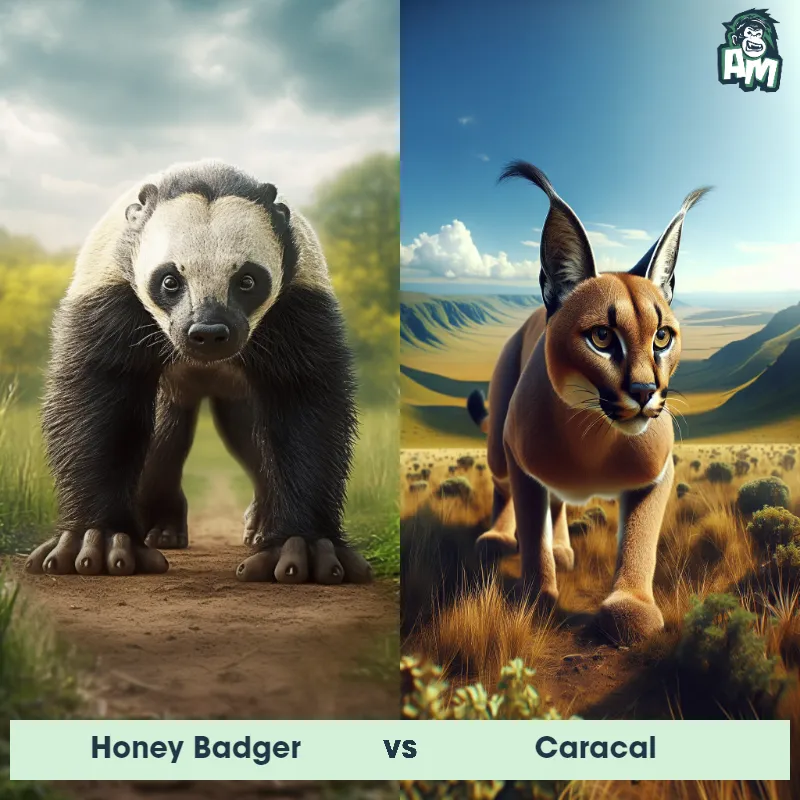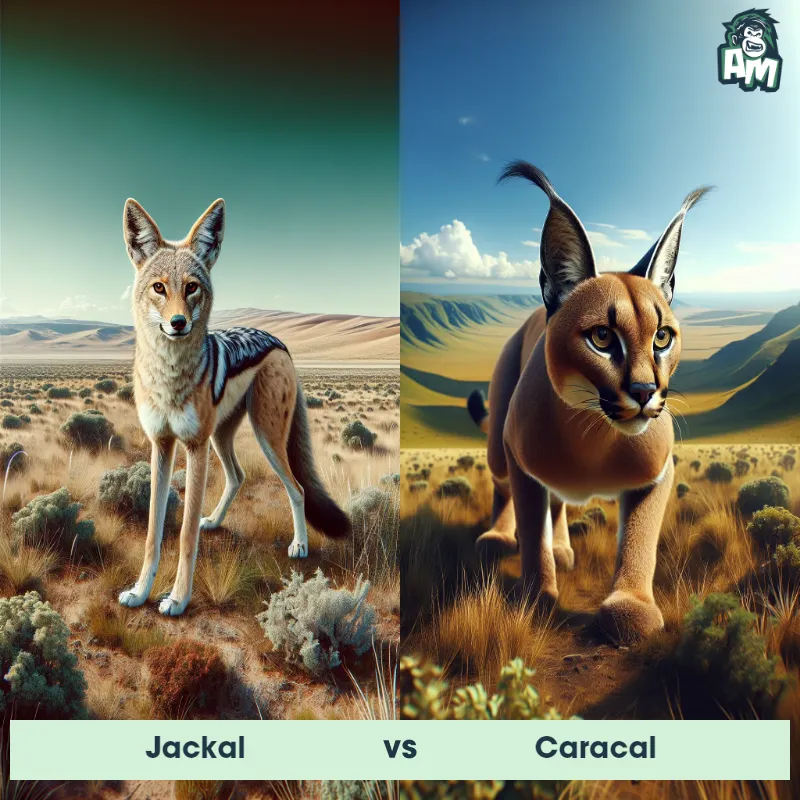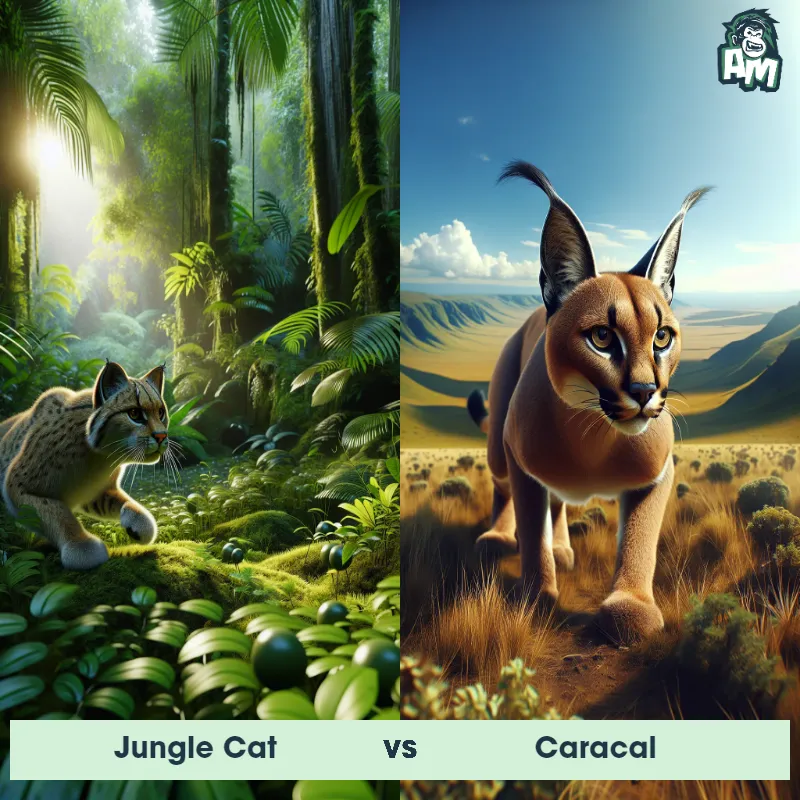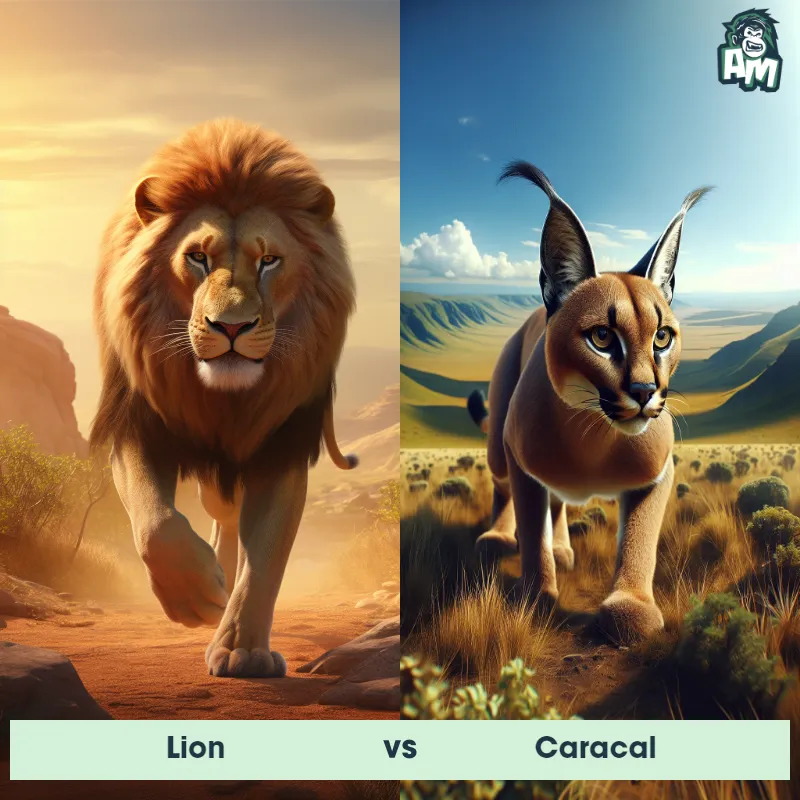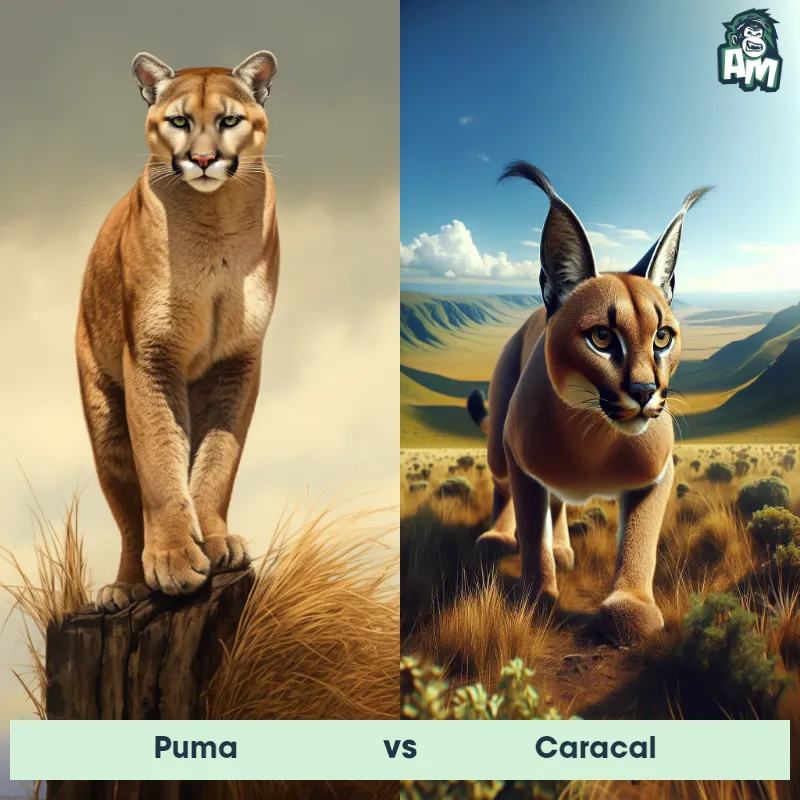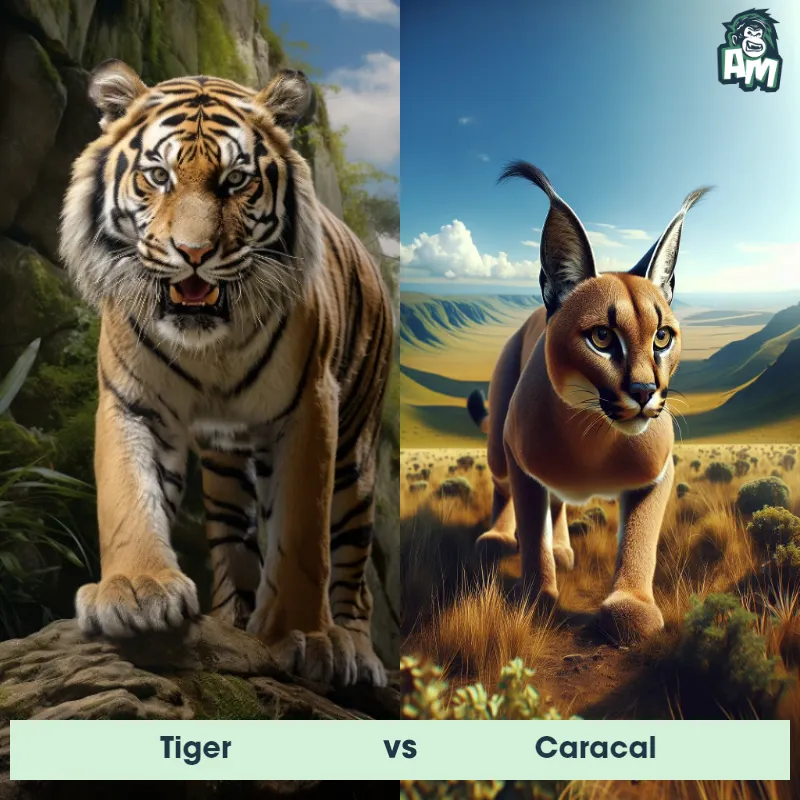The Caracal
The Caracal, also known as the desert lynx, is a medium-sized wild cat native to Africa, the Middle East, and parts of Asia. It is easily recognized by its unique tufted ears, which are long and pointed. The Caracal has a muscular build and can weigh up to 40 pounds. It has short, reddish-brown fur with a distinctive pattern of black spots and stripes. This agile predator has strong hind legs that enable it to leap high into the air, making it an excellent hunter.

| Caracal | |
|---|---|
| Size | 40-50 cm at the shoulder (16-20 inches) |
| Weight | 13-20 kg (29-44 pounds) |
| Speed | 50mph (80km/h) |
| Key Strength | Agility and powerful jumps |
| Biggest Weakness | Not particularly known for its strength in physical combat |
| Scientific Name | Caracal caracal |
| Family | Felidae |
| Habitat | Various habitats including savannas, woodlands, scrublands, and semi-deserts |
| Geography | Africa, the Middle East, and parts of Asia |
| Diet | Mainly small to medium-sized mammals (such as rodents, hares, and antelope), birds, and occasionally reptiles |
| Lifespan | 10 years - 15 years |

The Caracal
The Caracal, also known as the desert lynx, is a medium-sized wild cat native to Africa, the Middle East, and parts of Asia. It is easily recognized by its unique tufted ears, which are long and pointed. The Caracal has a muscular build and can weigh up to 40 pounds. It has short, reddish-brown fur with a distinctive pattern of black spots and stripes. This agile predator has strong hind legs that enable it to leap high into the air, making it an excellent hunter.
Fun Fact: Caracals have incredible jumping abilities, capable of leaping up to 10 feet in the air to catch birds in flight. Their muscular back legs act like springs, allowing them to jump gracefully and swiftly.
| Caracal | |
|---|---|
| Size | 40-50 cm at the shoulder (16-20 inches) |
| Weight | 13-20 kg (29-44 pounds) |
| Speed | 50mph (80km/h) |
| Key Strength | Agility and powerful jumps |
| Biggest Weakness | Not particularly known for its strength in physical combat |
| Scientific Name | Caracal caracal |
| Family | Felidae |
| Habitat | Various habitats including savannas, woodlands, scrublands, and semi-deserts |
| Geography | Africa, the Middle East, and parts of Asia |
| Diet | Mainly small to medium-sized mammals (such as rodents, hares, and antelope), birds, and occasionally reptiles |
| Lifespan | 10 years - 15 years |
Caracal Matchups
We use AI to simulate matchups between the Caracal and other animals. Our simulation considers size, strength, and natural predatory behaviors to determine the most likely outcome.
Caracal: Diet, Predators, Aggression, and Defensive Behaviors
What do Caracals eat?
Caracals primarily prey on small mammals such as rodents, hares, and birds. They are also known to hunt larger animals like antelopes and young ungulates. Occasionally, they may feed on reptiles and insects as well. Caracals are skilled hunters and are able to ambush their prey with stealth and agility.
Do Caracals have any predators?
Due to their size and predatory nature, adult Caracals do not have many natural predators. However, young Caracals may be vulnerable to larger predators such as lions, leopards, and hyenas. Additionally, human activities such as hunting and habitat destruction pose a threat to Caracal populations.
Are Caracals aggressive?
Caracals are generally solitary and secretive animals. While they may exhibit aggression towards potential threats or competitors, they are not considered overly aggressive towards humans unless they feel threatened or cornered. They are more known for their elusive behavior and swift hunting skills.
Do Caracals fight?
Caracals are solitary creatures and typically avoid confrontation with other animals. However, they may engage in conflicts over territory or mating rights. During these encounters, Caracals may hiss, growl, and engage in physical combat using their sharp claws and teeth.
How do Caracals defend themselves?
When threatened, Caracals have several defense mechanisms at their disposal. They may use their sharp claws and teeth to fend off attackers, as well as their agility and speed to escape danger. Caracals are also known for their impressive jumping abilities, which allow them to evade predators and navigate their environment efficiently.
What is the biggest weakness of Caracals in a fight?
While Caracals are skilled hunters and adept at self-defense, their relatively small size compared to some larger predators can be a disadvantage in a fight. Larger predators such as lions or hyenas may overpower a Caracal in a physical confrontation, especially if they are outnumbered or surprised. Additionally, habitat loss and human interference pose significant threats to the survival of Caracal populations worldwide.
Fun Fact: The Caracal possesses remarkable hearing skills, thanks to its tufted ears. These tufts of black hair not only add to their fierce appearance but also serve as a visual communication tool between individuals of the species.
Fun Fact: Unlike many other wild cats, the Caracal is proficient in swimming, a skill that comes in handy in their semi-aquatic habitats. They are able to swim across rivers and bodies of water to search for prey or escape from danger.





